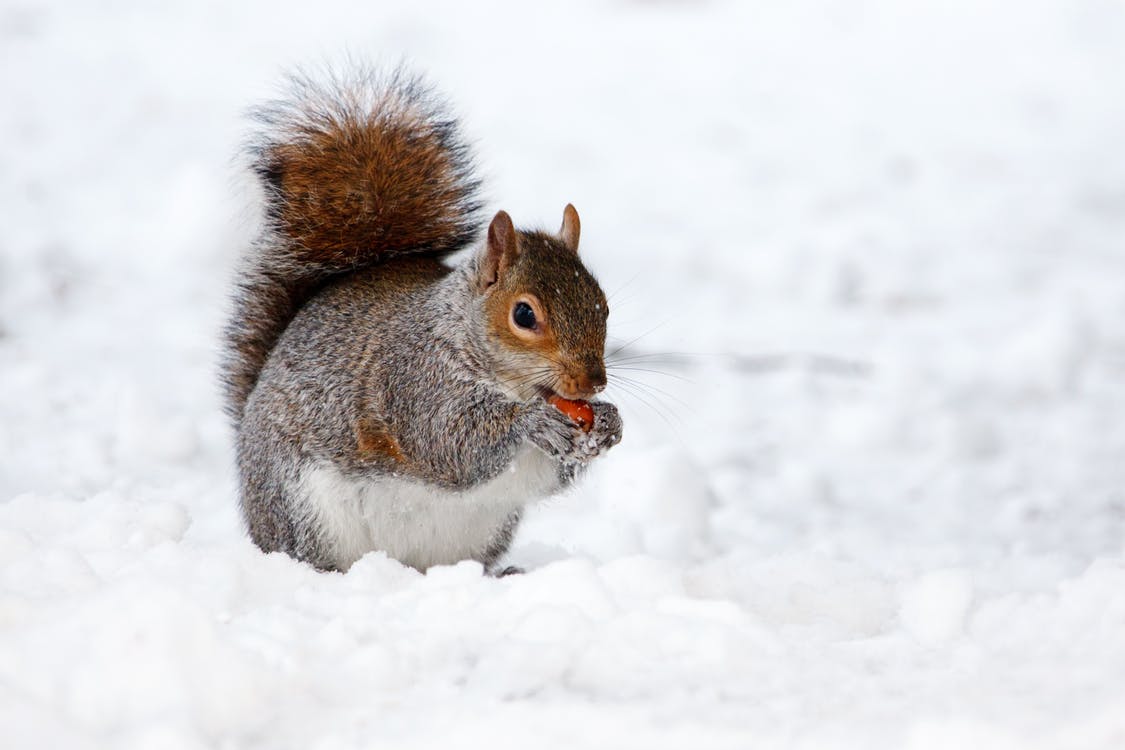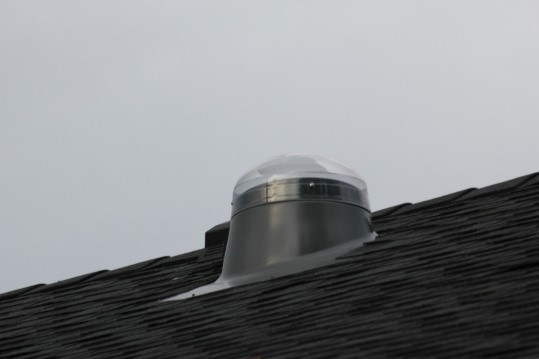Common Winter Roofing Problems: How You Can Identify, Fix, and Avoid Them
Last winter was a particularly gruelling one for those of us in Southern Ontario, and this year isn’t gearing up to be any nicer. Some areas already saw a healthy dose of snow and our coldest ever November temperatures.
As a homeowner, you need to be ready to protect one of your home’s most valuable assets—the roof above your head—from the chilling effects of winter. This means knowing not only the types of problems you may encounter over the next few months, but also the actions you should take if you do.
How Do I Know if I Have Problems?
According to the Canadian Mortgage and Housing Corporation (CMHC), there are a few signs you should watch for if you’re concerned your roof has been adversely affected by winter weather:
- New leaks inside your home that seem to be originating from your roof or attic.
- Doors that have suddenly become more difficult to open (jammed), possibly due to the additional load your roof is bearing with snow and ice.
- Cracks in drywall or plaster again caused by the extra weight of snow and ice on your roof.
- Sagging on the ridge line (where two sides of a sloped roof meet).
Remember—the earlier you spot a problem, the easier it will be to fix.
Click here to learn more about the winter roof services Herb Lodde provides or contact us today to request a free in-home quote!
6 Potential Roofing Issues Homeowners May Face over the Winter
1. Condensation
This happens, in essence, when warm air (like what’s inside your attic) meets a cold surface (like the underside of a roof). The two most likely causes of condensation are improper ventilation and inadequate insulation.
Unfortunately, condensation can fly under the radar for quite some time before it’s noticed because it’s not as immediately obvious as some other wintertime woes like ice dams or fallen branches. The long-term effects, however, can be just as harmful. If left unchecked, condensation can lead to the development of mold and mildew inside your home that can compromise the integrity of other components like insulation.
To nip this problem in the bud, perform spot checks in your attic one or two times per year. Keep an eye out for both existing moisture and evidence of previous water damage (mold, mildew, and discolouration).
2. Ice Dams
Ice dams are one of the most common causes of roof damage for Canadian homeowners every winter. They form when higher portions of your roof become warmer than areas lower down. Snow and ice on these warmer zones then melts, flows downward, hits the colder edges, and re-freezes. This forms a ridge of ice that will continue to grow as more water drips down and piles up behind it.
Like with condensation, the two primary causes of ice dams are insufficient ventilation and insulation.
What can you do to prevent and remove ice dams from your roof? Read our blog to find out!
The three main problems associated with ice dams are:
- Especially if they begin creeping into or over the edge of your roof as icicles, they can weigh down and damage eavestroughs.
- They can get in the way of vents and introduce or further exacerbate problems you’re already having with your roof’s ventilation system.
- Ice dams prevent water from draining effectively. This may cause moisture to seep underneath your shingles, particularly in the spring when rains intensify, and cause significant (and costly) damage to your walls, ceilings, and insulation.
If you find yourself dealing with ice dams this winter, contact a roofing professional. They will assess the situation and provide guidance on next steps, including whether or not they will be able to remove the ice dams. Please keep in mind, however, that some ice dams are simply too dangerous to remove.
3. Leaky Flashings
Flashings are pieces of metal placed over your roof’s joints and around spots like chimneys and vents that are meant to properly direct the flow of water and help prevent water damage. Flashings are incredibly important components of your roofing system, responsible for protecting some of the most sensitive zones, but they can also be vulnerable to damage themselves, especially during the winter.
As snow and ice builds up, moisture can find or create flaws in flashings, exploiting them to permeate underneath. Sometimes it will re-freeze and lift the metal strips, making your flashings even more susceptible to damage down the road. In other cases, it can percolate farther down and cause water damage inside your home.
When inspecting your flashings, you need to look both inside and outside of your home:
- Pay attention to where water damage is located if you discover it inside your attic. If it’s near a valley, vent, or chimney, damaged or faulty flashings may be to blame.
- Take a walk around your home and, as long as it’s safe to do so, break out a ladder to get a closer look at your flashings and make sure everything is still sitting flush against your roof.
As the saying goes, an ounce of prevention is worth a pound of cure. When flashings are installed, the seams should always face downhill, making it harder for water to get in. Flashings should also be continuous pieces where possible, though keep in mind that in some spots (like around skylights) that can’t be done.
Read our blog to learn more about the components of your roof, flashing included.
4. Tree Limbs
Over the last few winters, Ontario has seen its fair share of ice storms—weather events that have knocked out power to thousands across the province, turned roads into skating rinks, and caused trees to collapse and break under the added weight.
To keep your home protected, we recommend keeping trees trimmed roughly a metre back from your roof.
5. Animals
Especially during a cold winter, your home can become a haven for wildlife seeking warmth. Squirrels, mice, and rats account for the majority of problem pests (80%), but other animals like raccoons, bats, and birds also make it on the list.
If you do have unwanted animals in your home, you’ll likely find them in your attic. Perform an inspection and watch for:
- Signs that animals have been burrowing or making homes.
- Wood that appears to have been chewed.
- Food waste and other refuse.
- Holes through which critters may have been able to enter.
If you find evidence of animal activity, you need to make sure they’re gone before you plug any holes so they don’t become trapped inside and go on to cause additional damage. Be extra vigilant in the spring as well. Because it’s nesting season, animals will be all too eager to take advantage of vulnerabilities in your roof in order to turn your house into a home for themselves and their expanding families.
What can homeowners to do keep animals out of their attics? Check out these five tips!
6. Snow and Ice Buildups
Typically, this isn’t a problem for those of us in Southern Ontario, most homes being built to easily withstand whatever snowfall winter has in store for us, but it’s something to be aware of if it’s a particularly snowy winter.
Warning signs that the snow might be too much for your roof to handle include:
- Interior doors that are either getting stuck or popping out.
- Severe leaks or cracks in your walls.
- Persistent creaking, popping, or cracking sounds.
Often, homeowners will be able to remove rooftop snow using a tool like a long-handled rake. If you take this approach, make sure you choose an implement that won’t damage your shingles and be careful not to pull a load of heavy snow directly down on yourself. Exercise extra caution on ladders, as they will be slipperier than usual in the winter, and never climb on your roof yourself to remove snow.
How Can I Avoid Wintertime Roof Problems?
Ventilation
The purpose of a roof ventilation system is simple—to regulate airflow and temperatures inside your attic and ensure that, especially during the colder winter months, you don’t have an excess of warm air coming into contact with a cold roof.
The general rule of thumb according to roofing experts and building codes is one square foot of attic ventilation for every 300 square feet of attic space. The exact ratio, however, will vary depending on your roof structure and local climate.
Insulation
Alongside ventilation, attic insulation plays a critical role in regulating temperatures. Although roll insulation was traditionally the most popular type of insulation available, in recent years homeowners have turned to blown-in insulation because it is quite frankly a superior product. It’s better able to get into tighter cracks and crevices, ensuring a more air-tight seal.
Inspection
You can break inspections into two categories: preventative and reactive:
- We recommend homeowners perform regular inspections of their home (roofs included) one to two times per year. This will enable you to identify potential problems early and fix them before they turn onto major headaches later on.
- Outside of these routine checkups, it’s important to check on your roof if you suspect it has sustained damage (like after a bad wind or ice storm).
Remember to keep your safety top of mind. Always wait until a severe weather event has passed before performing any inspection and be extra cautious of potentially slick surfaces. If you need to get on top of your roof for a more thorough look, get in touch with an experienced roofer.
Installation
At the end of the day, avoiding problems down the road starts with high-quality materials and workmanship.
Watch our video to learn how our expert roofers install new roofs throughout Southern Ontario (Oakville, Burlington, Hamilton, St. Catharines, and Grimsby).
What Should I Do if I Encounter Roofing Problems over the Wintertime?
If you notice roof-related problems during the winter you should contact an experienced roofer right away to assess the damage and perform any necessary repairs.
Winter or spring, rain or snow, the expert roofers at Herb Lodde have you covered! We’ve being providing quality roofing services since 1964 and stand behind our workmanship, delivering superior results using only the best materials. Contact us today to schedule your in-home consultation!
Like this? You might also like:



